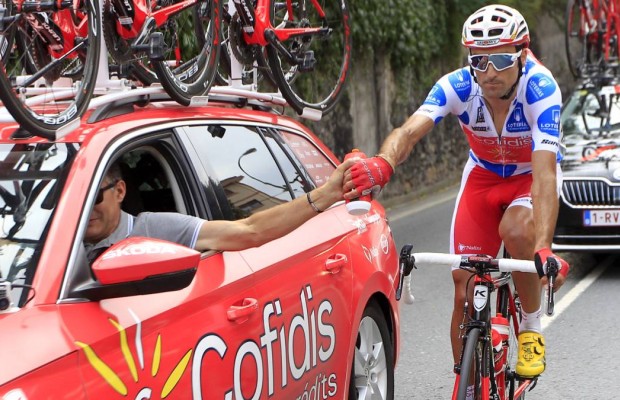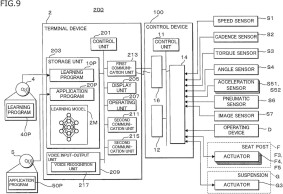Shimano patents an electronic suspension for MTB, will it see the light of day?
Shimano patents a system for suspensions and seat posts with the characteristic machine learning principle of artificial intelligence. The system promises to regulate various parameters automatically, like the current Flight Attendant from SRAM, although it learns and takes into account the cyclist's preferences to fine-tune its operation for future occasions. For now, the idea is a patent and only time will tell if we will see it on the market.

Shimano seeks a revolution: machine learning for suspensions and dropper posts
Cycling lives within the unstoppable wheel of evolution. Manufacturers rack their brains to get ahead of their rivals and for the market to embrace the ingenious novelty that bears their stamp. It has now come to light that Shimano is committed to the principles of artificial intelligence to take the next step in terms of suspensions and seat posts, according to information published in the medium Pinkbike and in the patent registered by the Japanese giant.
Shimano seeks to make up for the negative trend that seems to have been accompanying them for some time and that materialized in several ways at the end of last year: the safety warning due to the risk of breaking some crankset models; the computer hacking; the working conditions of some of its employees; and the drop in sales.
RECOMENDADO

What is heart rate variability and how does it affect the cyclist?

Change wheels if you want to transform your bike's behavior

What bike size do you need? Here's how to find out

How does age affect performance and recovery?

How long cyclists can be pushed when handed a sticky bottle?

10 tips for safer and faster downhills on road bikes
The tentacles of artificial intelligence seem to want to grab all sectors of the industry. Despite the qualitative leap of AI that has occurred in the last year, Shimano already registered this patent -which goes by the name of 11866114 B2- at the beginning of 2020.
Main manufacturers have been working for years on the automatic control of suspensions, although Shimano's system -also designed for seat posts- takes it a step further: the invention includes a machine learning program so that the automatic control better adjusts to the particular tastes of each cyclist.
The system proposes the configuration it considers most suitable, learns from the cyclist's response, which it communicates through a screen if they like it, and retains the information for future occasions.

The component package has a data collection using various sensors that measure the characteristics of the ride and the type of terrain being traversed. Among them, speed, cadence, torque, accelerations, tire pressure, use of brakes or balance, as well as a front camera and meters in the suspension itself that analyze the absorption of the forces coming from the wheel.
A control unit -the brain of the system- collects the data and, through small electric motors or electric valves, gives the appropriate adjustment orders to vary the spring hardness, the shock absorber, the travel, the seat post height or the saddle position.

The novelty that Shimano introduces in these automatic systems is that they are capable of learning over time; that is, the more data it has, the better it works -hence the principle shared with AI-. And in fact, beyond the data it collects on its own, the cyclist also plays an important role.
The system has a screen on which, through a simple selection between 'I like' and 'I don't like' the cyclist gives their opinion on the adjustments and changes made in the last ten seconds. The machine will maintain or tweak the configuration and will take it into account for future situations. In this way, for the same route, each bike will behave differently, according to what it understands is best for each cyclist.
The system could store several routes, which could encourage its use among elite racers when they take part in a competition. During training, they could let the system learn and fine-tune the selection until they find the ideal adjustment. Despite being an attractive solution for these cases, it is possible that they would ultimately reject it due to the added weight of the system and, to a greater extent, the battery.

On the other hand, as for dropper posts, Shimano could position itself at the forefront of the sector if this patent comes to light in the final market. To the change in seat post height, it wants to add the adjustment of the tilt and advance/retract the saddle; that is, modify the saddle position, the cyclist's pedaling posture and, therefore, the geometry and behavior of the bike.
This would solve the limited adjustment capacity allowed by current systems and sends a warning to navigators about where the industry could be heading in the coming years.

Shimano's idea is daring and provocative, although it is strange that the brand has focused its efforts on the automatic control of suspensions and seat posts when it does not manufacture suspensions and has barely flirted with seat posts. The mystery remains open, while the Japanese giant usually keeps a low profile when it comes to talking about patents.
So Shimano's idea is, for now, just that, an idea. A patent with a purpose that is difficult to unravel and that only time will reveal if it materializes and ends up reaching the market.